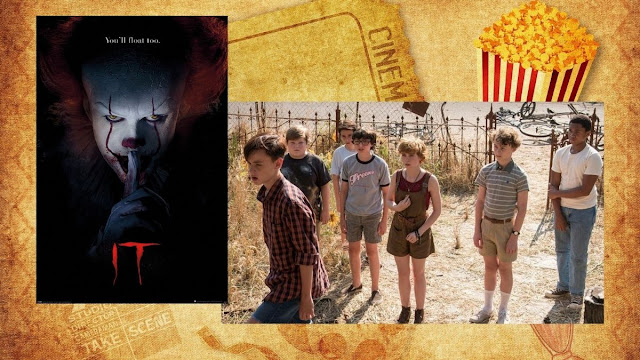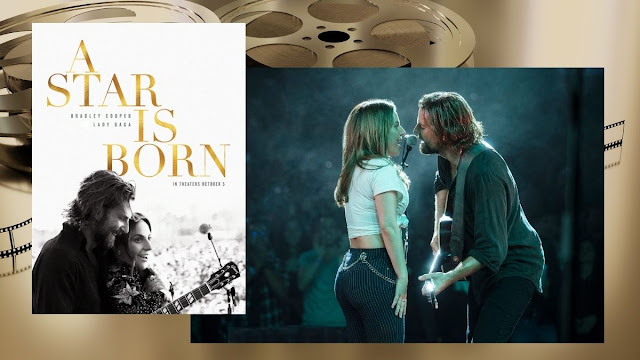Steve Reviews It
I have been a fan of Stephen King in general, and "IT" in particular, for about 25 years. Despite being exposed to horror films very early in my life, I was only six when the 1,100 page novel (King's longest) was published. Like many children of my generation, my first exposure to this story came in the very early Nineties when a television miniseries aired (or in my case, was rented on VHS). That version famously starred Tim Curry as Pennywise the clown and scarred the childhood of an entire generation. Curry's Pennywise is often put on the Mount Rushmore of horror - right there with Freddy, Jason, and Michael Meyers. It's a brilliant performance that is terrifying and iconic - almost to a fault. Curry is so highly regarded in the horror fandom for this role that even the thought of remaking the film has been met with push-back and criticism before even a word of the new screenplay was written.
Unfortunately, the script for that television miniseries that first aired in 1990 was not very good. Even with a running time of three hours, there just isn't enough time to cover even the basics of the epic novel that King penned. It tries very hard, and it's not awful. It's just extremely limited by two factors. One, the changes that must be made for ANY adaptation to translate from book to screen were not well executed here - including a variation to the end of the story that fell extremely flat and left book purists to claim the whole thing was awful. Second, being written for television means the horror that does translate into adaptation was watered down to play to a primetime audience. It's the equivalent of a PG-13 film that doesn't do the story justice.
So the miniseries ends up having a once-in-a-lifetime acting performance in a story that doesn't hold up. A theatrical remake has been in talks for quite a while, and it caused a rift between the book purists and the Tim Curry fans. How can you recast Pennywise with anyone else? On the other hand, would we get an R-rated version of the story that it desperately needs to be told correctly? As it turns out, both happened.
The story of IT is not about a killer clown, as an outsider may be led to believe. The story is, in classic Stephen King fashion, about a group of individuals banding together to win the good versus evil story that has existed since the beginning of time. In this case, it's the group of seven pre-teens who face their fears to take on the evil entity that has terrorized Derry for centuries - only appearing in intervals of approximately 27 years. Derry is a strange place, indeed. Children go missing at a rate that is a multiple of the national average. The adults have been conditioned to evil. Or maybe it's that they just aren't afraid anymore. Or maybe they just don't remember. The evil that has lived in Derry forever tends to take the form of Pennywise the Dancing Clown, but it can be whatever It wants. It will likely take the form of the thing you fear the most.
After years of planning, multiple writers and directors coming and going, the film ultimately landed in the hands of Andy Muschietti, who really hasn't made anything of substance. He cast Bill Skarsgard in the role of Pennywise to internet claims that he was too young, too pretty, too nice, too not-Tim-Curry. For the children, only one face was familiar to some, and that belonged to Finn Wolfhard who is a star on the Netflix series Stranger Things. The novel actually takes place over two generations. It's a classic "then and now" situation where the adults have to reunite and face the evil that they thought they destroyed when they were kids. It bounces back and forth, with each character reliving memories of that fateful summer 27 years prior. The screenplay for the 2017 film - incidentally 27 years after the TV miniseries - was written just as the children's half of the story. This was an excellent way of doing things as far as adaptations go. The miniseries tried to go back and forth and fell flat. Here, we have one story. The only story as far as the kids are concerned. They had a beginning, middle, and end. It's perfect. Then, when the second film arrives from the adults perspective, both the characters AND the audience will have the childhood memories.
The story begins on screen as it does in the book. Six year old Georgie Denborough is off to sail his paper boat in the storm runoff outside. His big brother Bill is sick in bed and cannot join him or, ultimately, save him. When George's boat goes into the storm drain at the corner of Kansas and Witcham Streets, things are never the same. George encounters Pennywise and becomes the first victim in the new generation of terror. The new generation is set in 1989, so that the adults can be presented as "present day" in the sequel. As an 80's apologist, I fully support this adaptation change. The seven unpopular kids, the self proclaimed "losers club, each have seen the evil entity in some shape or another, and they realize the only way to defeat it is to challenge it head on.
Fans of novels that get adapted to film are almost always upset. Speaking broadly, I think most people don't understand that books and movies are fundamentally different. In a book, the author can take any approach he wants. He can go on tangents that don't relate to anything. He can (and Stephen King often does) go into the minds of the characters and describe what they are thinking, believing, feeling, smelling, loving, and fearing - all things you can't film. So, when it comes time to point a movie camera, things are lost. On top of this, movie screenplays are like math problems. I won't get into the specifics, but certain events have to take place at certain times, and you can set your watch to a good screenplay. These things combined mean that events have to be changed from book to film in order to keep the length down to under three hours and have it make sense in terms of a movie. There are limits. Limits that do not exist in print.
Some of the changes from IT the novel to IT the 2017 blockbuster is that life in the 1980's is different that it was in the 1950s, and therefore the children have different lives - and different fears. The fact that young Stan Uris is afraid of the creepy painting in his father's office instead of the ghost of a drowned child bothers me not. Some of the changes were done to combine story elements that would take too long to tell on their own. Remember in the book when adult Mike Hanlon tells the story about his grandfather almost dying in a horrific fire? The film version takes the fire concept and makes it young Mike's fear. Brilliant. In the novel, adult Mike is the only "loser" to not leave Derry. He becomes the town historian. In the film, there isn't an adult Mike yet, so young Ben Hanscom gets changed to the new kid in town who teaches himself the town history and gets his fear from one of the bad things that happened years ago that there isn't time to show completely on screen. Also brilliant.
The biggest omission from book to screen is the lack of town geography. Many places in Derry - specifically the barrens where the children play and the standpipe that holds the town's water - are key to the story and left out of the film. But this is perfectly fine by me. The standpipe makes two appearances to appease the book folk. Once as a school project of young Ben and also on the postcard that he sends to Beverly. Fitting that this town landmark is featured by the kid who, in this version, learns about the town's history. Young Richie Tozier isn't afraid of the Paul Bunyan statue in town like he is in the book. Instead, the statue is shown to appease the diehards, but Richie is instead afraid of clowns. How perfect. There's even a scene in the film when Richie is submerged in clown images, and one of them is the image of Tim Curry's 1990 Pennywise. The ultimate wink and nod.
Overall, I absolutely loved this film. I don't think it could have been done any better. Pennywise in 2017 is really scary. The computer-enhanced movements (and those teeth!) make for some jump-out-you-seat moments. AND, it's rated R. There is significantly more detail paid to the death scenes - detail that adds gore to the terror and raises the bar ten-fold.
The world apparently didn't mind this new IT, either. A weekend box office of $117M broke every September record and boasts the highest opening weekend for a horror movie. Ever. The end credits do show "chapter one," indicating that the adult half of the story is yet to come. I have heard that the children will, in fact, return for the sequel to accommodate any flashbacks that didn't occur in this first half. The script is underway, and Muschietti is hoping to begin shooting in early 2018, meaning that we could have "chapter 2" by next Halloween if all goes well. With these uncanny receipts, I could actually see some of the members of the Academy giving some love come nomination time. The Pennywise costume is award-worthy in itself, and things like sound mixing may not win, but could garner some noms.
Go see this film. Even if you have no knowledge of the story, it is a great horror film on its own. If you ARE a fan of the story, I'm telling you its worth your money. And the next time it rains, walk an extra couple steps farther away from the storm drains. You never know what's down there.
Steve
9.11.2017




Comments
Post a Comment